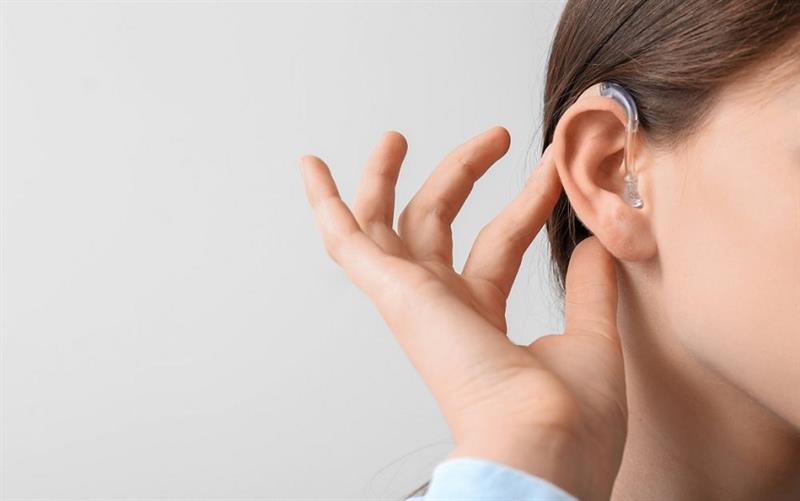
Advancements in technology have revolutionized the landscape of hearing aids, ushering in an era where clarity and precision redefine the auditory experience. This exploration delves into the cutting-edge features that characterize modern high-tech hearing aids, offering a glimpse into the future of enhanced hearing solutions.
The future of hearing aids is marked by a convergence of technology and user-centric design. As these high-tech features become more accessible, individuals with hearing impairments can look forward to a future where the clarity of sound is seamlessly woven into their daily lives. The journey into the realm of high-tech hearing aid features is a promising one, amplifying not just the volume of sound but the quality of life for those seeking a clearer, more connected auditory experience.
The detailed exploration of these high-tech features reveals a comprehensive approach to addressing various aspects of hearing aid functionality. From personalized sound experiences to enhanced adaptability in diverse environments, these features collectively contribute to a future where individuals with hearing impairments can enjoy a more connected, customizable, and technologically advanced auditory experience.
1. Smart Connectivity:
High-tech hearing aids seamlessly integrate with smartphones and other devices, allowing users to stream audio directly to their ears. This connectivity not only enhances listening experiences but also enables hands-free communication and audio customization through dedicated apps.
- Modern hearing aids often come equipped with Bluetooth technology, allowing seamless connectivity to smartphones and other smart devices.
- This connectivity enables wearers to stream phone calls, music, and other audio content directly into their hearing aids.
- Dedicated smartphone apps provide users with control over settings, volume adjustments, and personalized audio profiles.
2. Artificial Intelligence (AI) Algorithms:
Powered by AI, these hearing aids adapt to individual preferences and environments in real-time. They learn from usage patterns, making automatic adjustments to deliver optimal sound quality in various settings, from bustling city streets to quiet living rooms.
- AI algorithms in hearing aids continuously analyze and learn from the wearer's preferences and surroundings.
- These algorithms make automatic adjustments in real-time to optimize sound quality based on the wearer's specific needs and environmental conditions.
- The learning capabilities of AI contribute to a more adaptive and personalized hearing experience over time.
3. Noise Cancellation Technology:
State-of-the-art noise cancellation features filter out background noise, providing wearers with a clearer, more focused listening experience. Whether in a crowded restaurant or a windy outdoor environment, these advanced hearing aids prioritize speech and reduce unwanted sounds.
- Advanced noise cancellation features help filter out unwanted background noise, prioritizing the amplification of speech.
- This technology is particularly useful in noisy environments, such as restaurants or public transportation, enhancing the clarity of conversations.
4. Rechargeable Batteries:
Bid farewell to traditional disposable batteries. High-tech hearing aids often come equipped with rechargeable batteries, offering convenience and sustainability. With longer battery life and quick charging capabilities, users can enjoy extended usage without the hassle of constant battery replacements.
- Rechargeable hearing aids eliminate the need for traditional disposable batteries, reducing environmental impact.
- The rechargeable batteries typically offer longer life between charges and may have quick-charging capabilities, ensuring users have reliable power for extended periods.
5. Directional Microphones:
Precision is key, and directional microphones in modern hearing aids focus on the sound source, enhancing speech comprehension. This feature is particularly beneficial in situations where hearing amidst competing sounds is challenging.
- Directional microphones focus on the sound source, aiding in speech comprehension by reducing interference from surrounding noise.
- This feature enhances the wearer's ability to understand conversations, especially in challenging acoustic environments.
6. Customizable Sound Profiles:
Tailoring the listening experience to individual preferences, high-tech hearing aids allow users to create and save personalized sound profiles. Whether adjusting for different environments or specific activities, this customization ensures a comfortable and optimized auditory experience.
- Users can create and save personalized sound profiles tailored to different environments or activities.
- Customization options may include adjustments for volume, pitch, and specific frequency ranges, providing a highly individualized listening experience.
7. Health Tracking Sensors:
Some advanced hearing aids incorporate health monitoring features, such as activity tracking and heart rate monitoring. This integration not only enhances the user's overall health awareness but also contributes to a holistic approach to well-being.
- Some hearing aids incorporate sensors for health monitoring, such as step counting and heart rate measurement.
- This integration promotes overall health awareness and contributes to a holistic approach to well-being.
8. Water-Resistant Designs:
With robust and water-resistant designs, these hearing aids can withstand exposure to moisture, opening up possibilities for wearers to comfortably engage in water-related activities without fear of damage.
- Water-resistant hearing aids are designed to withstand exposure to moisture, offering durability and peace of mind.
- Wearers can comfortably engage in activities such as sweating during exercise or even light rain without concerns about damage to their hearing aids.
9. Speech Enhancement Technology:
Speech Enhancement Technology in hearing aids is a sophisticated feature designed to improve the clarity of speech for individuals with hearing impairments. This technology employs advanced algorithms to specifically target and enhance the sounds associated with human speech.
- Speech Enhancement Technology identifies and isolates the frequencies associated with human speech.
- Advanced algorithms work in real-time to analyze the acoustic environment.
10. Telecoil Technology:
Telecoil technology, often referred to as T-coil, is a feature incorporated into many modern hearing aids to enhance accessibility and improve the listening experience, particularly in specific environments. The telecoil is a small coil of wire within the hearing aid that acts as a receiver for electromagnetic signals.
- Telecoil technology enables direct connections to audio systems that produce electromagnetic signals.
- When a hearing aid user activates the telecoil mode, the device picks up the electromagnetic signal from a compatible telephone.
It's ideal to keep yourself as educated with your hearing aids and a new breakthrough in the technology. Ask your query via Book an Appointment today. For more information visit https://hearing.careinc.ca or you can call us today at (403)605-6300